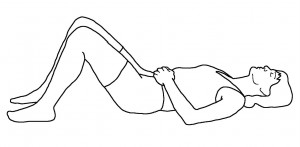G. I. Gurdjieff maintained that we are three-brained beings: intellectual, emotional, and moving/instinctive and that we can learn how to observe these three brains in action. Modern science has mainly looked at the brain as being located in the head and being composed of three basic centers or levels. In simplest terms, these centers, each functioning as a kind of sub-brain, are interrelated networks of nerve cells, each with its own intelligence and memory storehouse.
For many hundreds of years the Taoists have spoken of the importance of the “belly brain,” or “little brain,” in health, healing, and self-transformation. It may have taken a while, but according to an article by Sandra Blakeslee in the Medical Science section of the New York Times (January 22, 1996), western scientists finally “discovered” that the gut does indeed have its own brain, referred to as the enteric nervous system, which “is located in sheaths of tissue lining the esophagus, stomach, small intestine, and colon. Considered a single entity, it is a network of neurons, neurotransmitters and proteins that zap messages between neurons, support cells like those found in the brain proper and a complex circuitry that enables it to act independently, learn, remember, and, as the saying goes, produce gut feelings.”
The Taoists believe that the gut brain processes not just food but also emotions and other experiences, and that paying attention to this brain, learning to sense it and listen to it, can have an enormous beneficial impact on our lives. And I have certainly found this to be the case.
Those of us who are able to sense our bodies in an impartial way know that a lot of our fear, anger, anxiety, and other negative emotions are stored or at least reflected in the gut. And we know that the gut brain is intimately involved in communication between mind and body. Though it’s important eventually to be able to sense our gut, our belly, in the midst of action and stress, it’s helpful to start by practicing in quiet circumstances.
To begin, simply lie down comfortably on your back with your knees bent and feet flat on the floor. Sense how the earth, floor, or bed supports your weight. Rub your hands together until they are warm and put them on your belly in the area of your navel. Notice how the warmth and energy of your hands attract your breath into your belly, so that your belly begins to expand as you inhale and retract as you exhale. Now let your attention move gradually from the surfuace of your skin under your hands all the way back to your spine. See if you can listen to your belly as it breathes. What do you hear? What do you sense? What do you feel? What is your belly telling you? Is it tight? Is it open? Does your breath flow smoothly through both exhalation and inhalation? Once you can begin to sense your gut feelings in quiet conditions, see if you can listen to them in the midst of the activities of your everyday life. It is my experience, and that of many others as well, that allowing your breath to engage your belly in a fuller way actually increases the health and sensitivity of this “brain”.
I’ve been writing about and teaching this powerful work with the gut since 1994, both through Chi Nei Tsang (internal organ chi massage) and through my work with natural breathing. You can work with a more-complete form of this practice by doing my belly breathing practice. You can also find much more material in my books.
Next time you have a “gut feeling” about something, just tune in to your belly and how it moves as you breathe. This simple act of attention will reveal far more about your situation than you might imagine.
Copyright 2010-15 by Dennis Lewis
